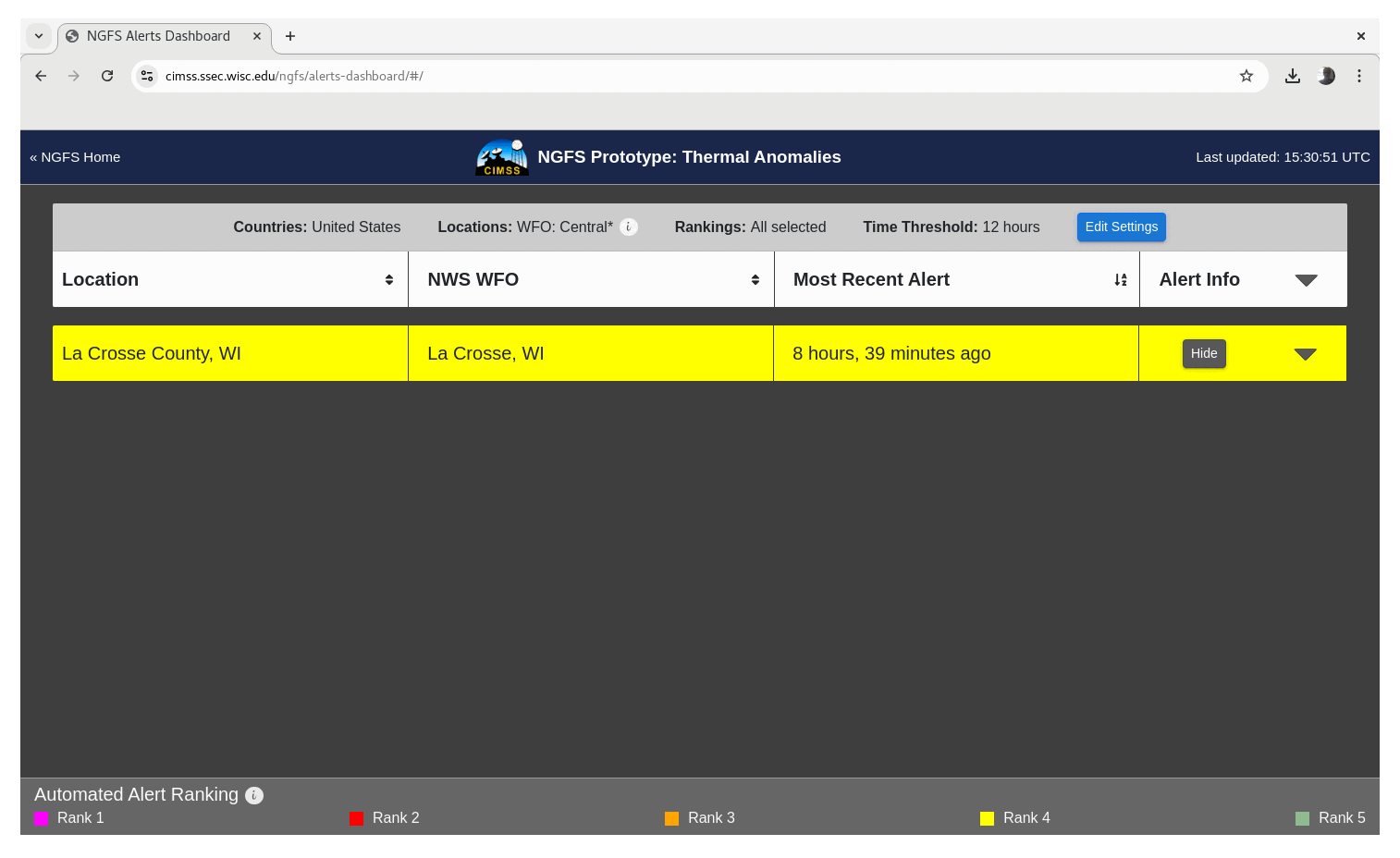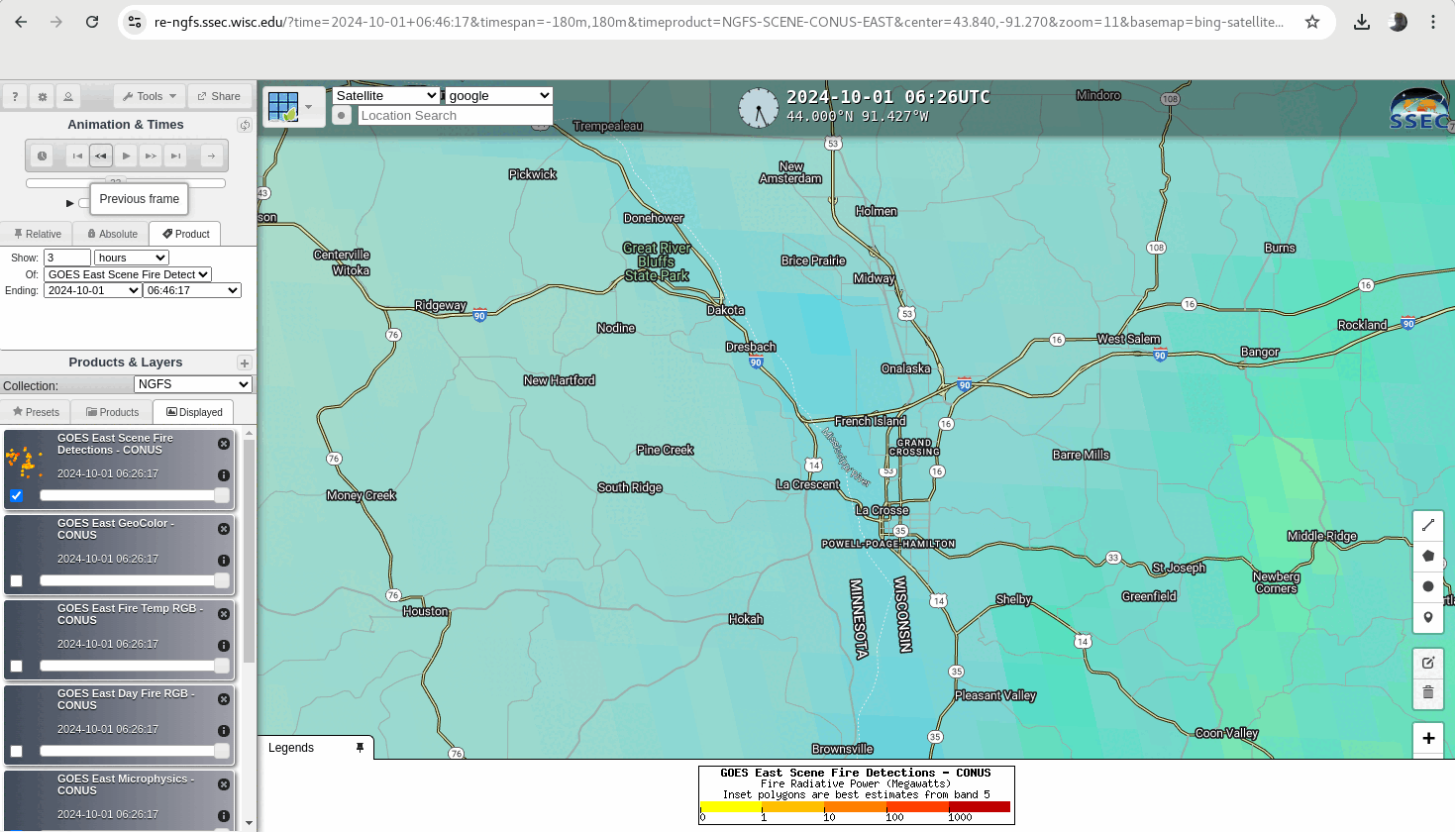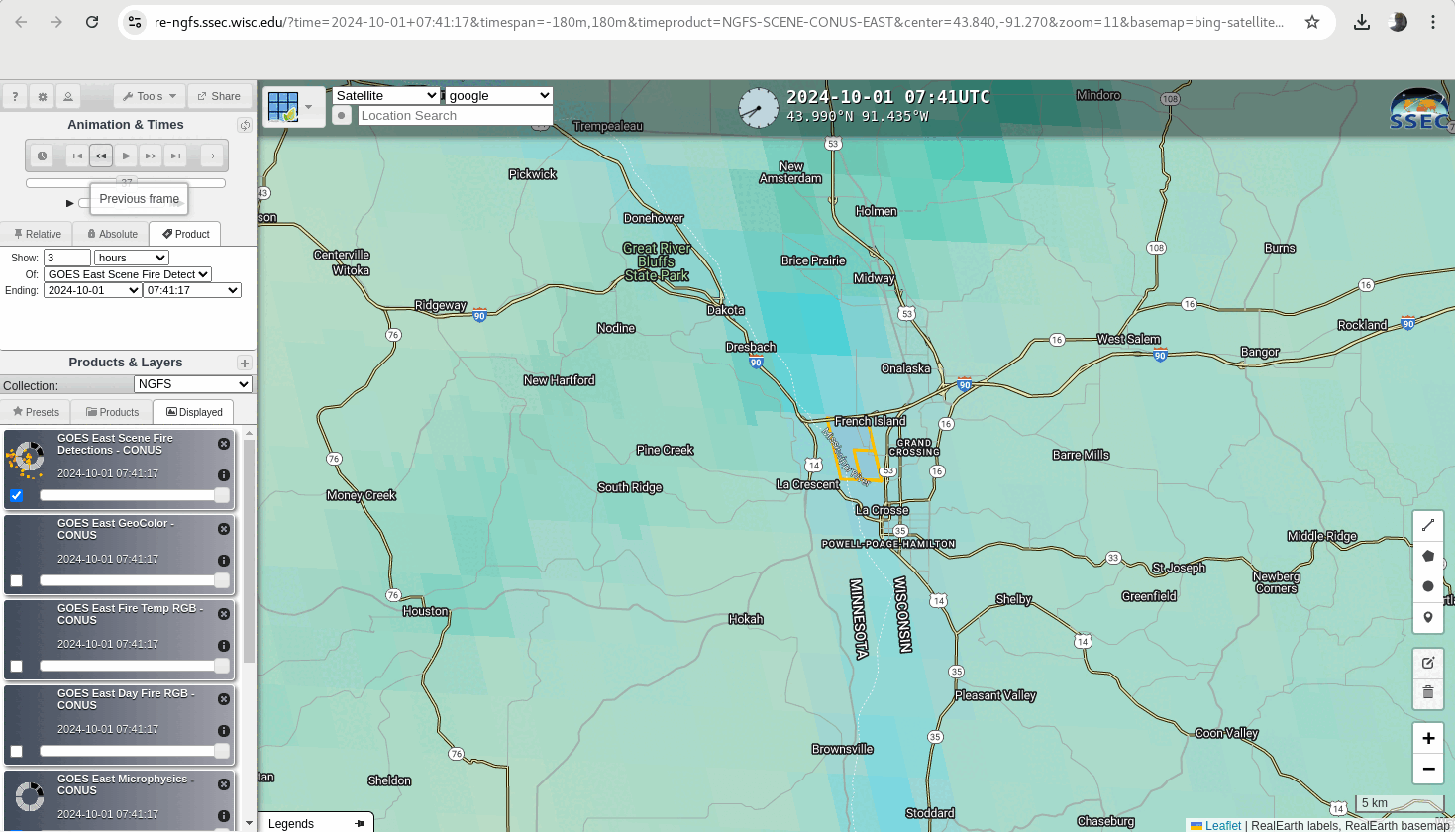NGFS views of the French Island Fire in La Crosse Wisconsin
CSPP Geosphere imagery, above, centered on LaCrosse, WI (the bluish thermal signal of the Mississippi River is also apparent) shows the development of brighter purple pixels starting at 0636 UTC. That change is perhaps easier to view in the slow stepped animation below. The changes in the RGB shows the initiation of a fire at a facility that recycles railroad ties (news link) in La Crosse. The initial small fire was in a shed before spreading to an adjacent mass of railroad ties.

How did the Next Generation Fire System do with this event? That is shown below. The first detection — at 0646 UTC — appeared shortly before 0650 UTC. Once that alert has occurred, you can click on the triangle to have access to the created imagery, showing the first NGFS detection, and from there you can open a RealEarth instance (here, for this example) that includes all imagery.

NGFS microphysics imagery, below, shows very subtle color changes between 0631 and 0636 and 0641 UTC before the NGFS identification of a fire pixel at 0646 UTC.

The Night Microphysics animation at the top of this blog post includes the signal of a cloud band, and the signal of the fire is lost in that animation as the cloud band moves over La Crosse. A particular strength of NGFS fire detections is their persistence in the presence of clouds, as shown in the animation below from 0741 to 0806 UTC. The cloud signal is apparent in the NGFS microphysics, and the fire detection persists through the cloud band’s passage.


